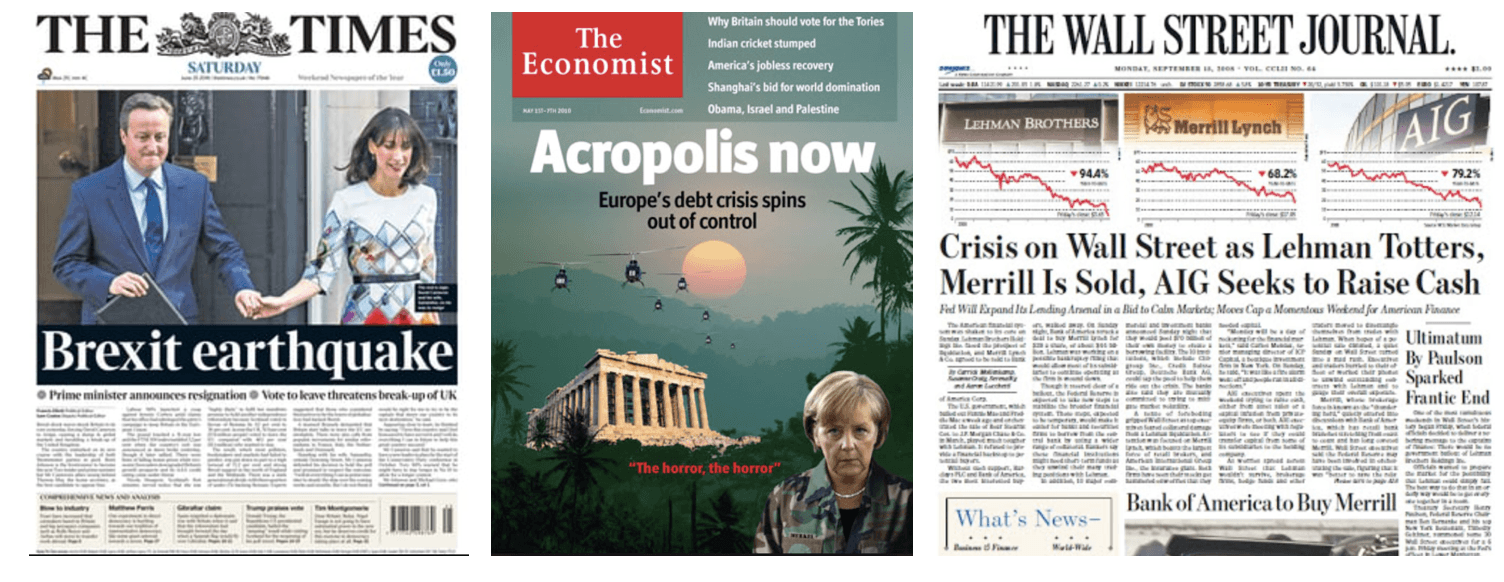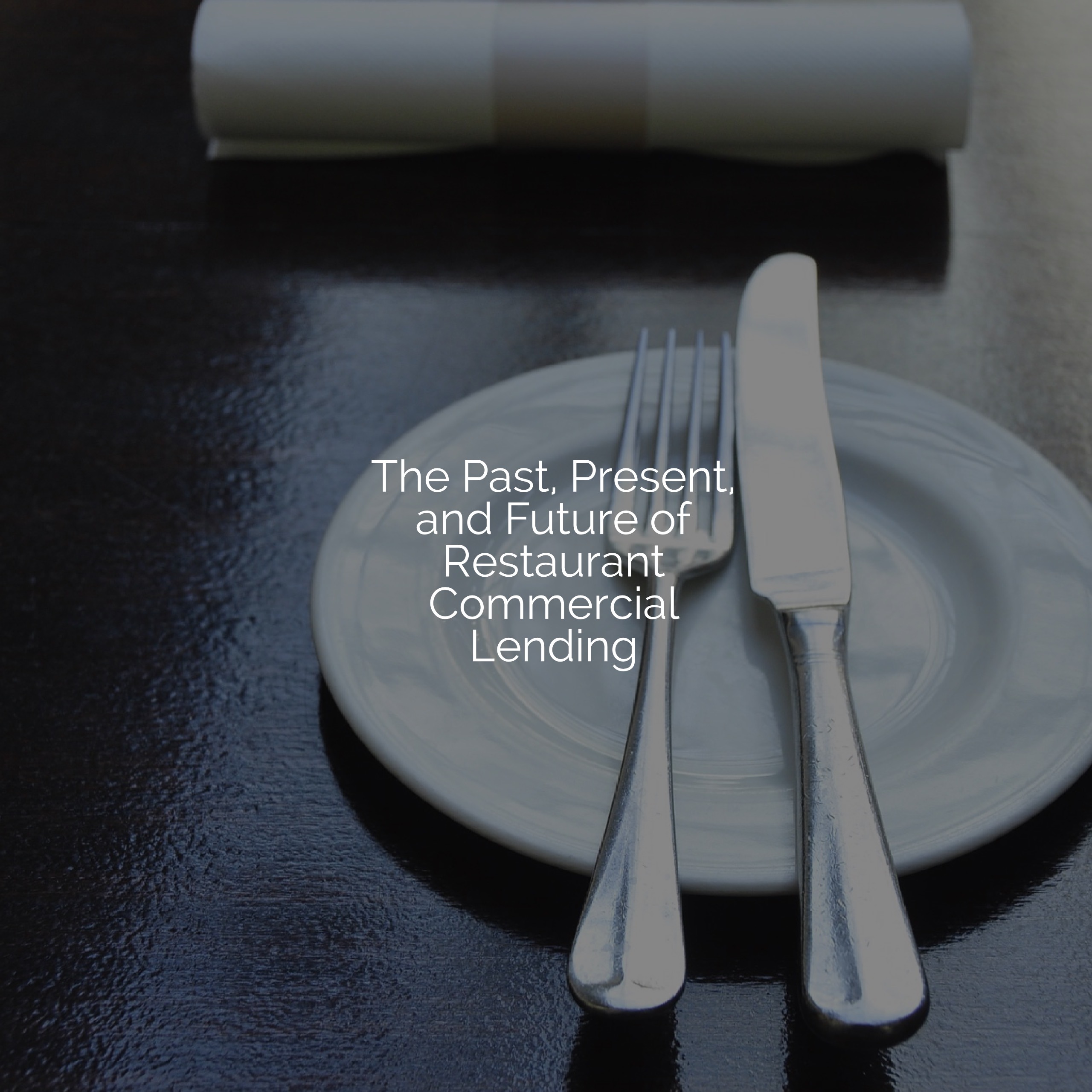Securing funding is a challenging pursuit for many restaurant chains, both small and large. Recently, though, we’ve seen a wave of lenders with specialized expertise in foodservice offer the ability to analyze a chain’s specific business challenges, maximizing the potential for the financing needed to grow.
Business lending is slightly different throughout the globe. Oil prices are having an effect on the lending climate in the Middle East, for instance, while BREXIT is making its mark on the UK. And in the US, some lingering whispers about a so-called restaurant recession persist.
Below, we’ll dig into where restaurant commercial lending has been, where it’s at now, and where it’s headed.
THE PAST FEW DECADES OF RESTAURANT COMMERCIAL LENDING

In the wake of (and throughout) the US recession, banks tightened their lending standards and commercial loan balances at US banks shrank. But the mantra since the financial crisis has been one of growth. Since 2008, we’ve seen a diversification of bank lending, with banks moving forward to look for new opportunities, including franchised restaurants. Restaurant companies haven’t shied from borrowing money, with restaurant commercial lenders in the US lending to chains looking to expand, create new concepts, or re-design existing ones.
GE Capital Franchise Finance had carved a niche in restaurant finance. When it was sold in June 2016 (and with it the bulk of its US restaurant franchise loan portfolio), though, it paved the way for other lenders — one of the reasons we’ve seen so many players recently getting into the restaurant lending space.
While the US suffered in the wake of the recession, other parts of the world have seen their economies impacted, too. Greece’s debt crisis began in 2010, during which time most international banks and foreign investors began selling their Greek bonds and other holdings. By 2016, European authorities had authorized $8.4 billion in bailout aid to Greece. Other European countries — including Ireland, Portugal, and Spain — are far less vulnerable to shocks in the market these days, having taken steps to overhaul their economies in recent years. BREXIT, of course, has made an impact over the past year, though, and could spell trouble for commercial lending moving forward.
THE PRESENT STATE OF RESTAURANT COMMERCIAL LENDING
As commercial loans allow restaurants and other businesses to take advantage of growth opportunities — and face their obligations when there are liquidity constraints — one way to look at the financial health of companies is their current ratio (calculated as current assets over current liabilities).
In the case of publicly traded restaurants, 63% have a current ratio lower than 1, indicating sub-par financial health. Unsurprisingly, mid- and small-cap restaurant companies tend to have lower ratios than large-caps. Bravo Brio, Chanticleer, and Del Taco are the weakest performers.
Weak financial health can eventually deteriorate the conditions necessary for restaurant chains to have access to commercial loans (i.e. those that aren’t doing well will be perceived as more risky, banks likely to ask for more strict conditions or higher rates on their loans). In the US, at least for now, we’re still seeing plenty of lending activity in the sector.
In the Middle East, GCC banks have become more selective about lending due to slower economic growth, tighter liquidity conditions, and weakening asset quality brought on by low oil prices. Financial conditions in Asia have begun to tighten and remain sensitive to global factors, including U.S. interest rates. In 2016, credit growth remained robust in the region, but was well below the average of the previous decade in most economies, with the exception of Hong Kong, New Zealand, and the Philippines.
In China, meanwhile, credit growth continues at twice the pace of nominal GDP. In India, an increase in banking system liquidity as a result of the currency exchange initiative has been found to lead to a decline in bank lending rates. According to the IMF, the weighted average lending rate of banks on new loans in India declined by 56 basis points from November 2016 to January 2017.
FORECASTS FOR RESTAURANT COMMERCIAL LENDING
The restaurant industry tends to follow suit with general lending trends throughout the world. In the US, commercial and industrial loans (including all commercial banks) have plateaued since October 2016, with 2017 growth remaining relatively flat. Stagnant loan activity has been pointed to as an indicator of tightening conditions in the economy, which could mean bad news for restaurant demand.
Internationally, though, the story is a little different. Weaker economic prospects in the aftermath of the BREXIT vote have dampened demand in the UK, where business loans are expected to shrink to their lowest point in more than a decade over the next couple of years. Total lending to businesses is expected to contract 1.8% in 2017 and another 1% in 2018 before recovering the following year, according to recent data from EY. By then, the total stock of business loans will have dropped to £376 billion (US$497 billion), the lowest point since 2005.
In the Middle East, banks are projected to become more selective in granting loans in 2017 and 2018, particularly to companies that represent higher risks. GCC loan growth is expected be close to 5% in 2017, lower than the average annual growth of 9.2% recorded between 2012 and 2016.
With consumers spending more money on food at restaurants than at grocery stores, there is enough demand to allow for the continued development of new concepts (and the growth of existing ones). Thanks to Private Equity’s continued flirtation with foodservice, an equity cushion means lenders feel more confident in the US restaurant lending space.
Though we’ve seen a lot of large franchises turn to banks for commercial loans, the smaller, early-stage chains (those with 20 or fewer locations) will still face challenges, and likely find the most success with small business loans, and other forms of capital, particularly in the PE space. For now, though commercial banks and national lenders view restaurants as an opportunity, one that continues to demonstrate growth.
OTHER RELEVANT CONTENT:
A Roundup of US Restaurant Commercial Lenders
The Most Active Restaurant Private Equity Firms
Private Equity Deals Make Their Mark On the Middle East Restaurant Industry
A History of Restaurant Initial Public Offerings, 2000-2017
* * *
ABOUT AARON ALLEN & ASSOCIATES:
Aaron Allen & Associates is a leading global restaurant industry consultancy specializing in growth strategy, marketing, branding, and commercial due diligence for emerging restaurant chains and prestigious private equity firms. We work alongside senior executives of some of the world’s most successful foodservice and hospitality companies to visualize, plan and implement innovative ideas for leapfrogging the competition. Collectively, our clients post more than $100 billion, span all 6 inhabited continents and 100+ countries, with locations totaling tens of thousands.

